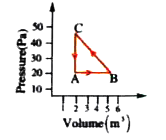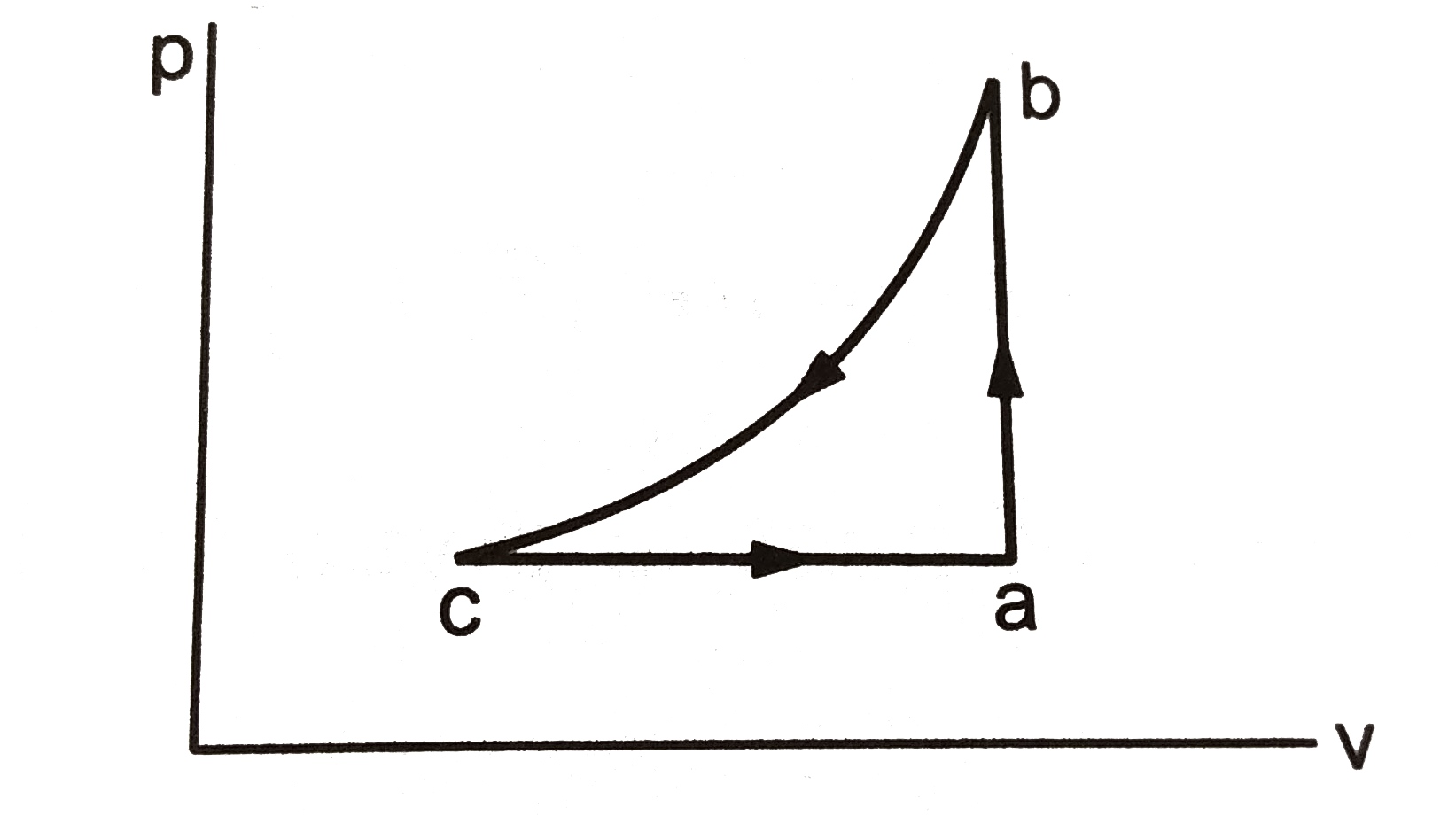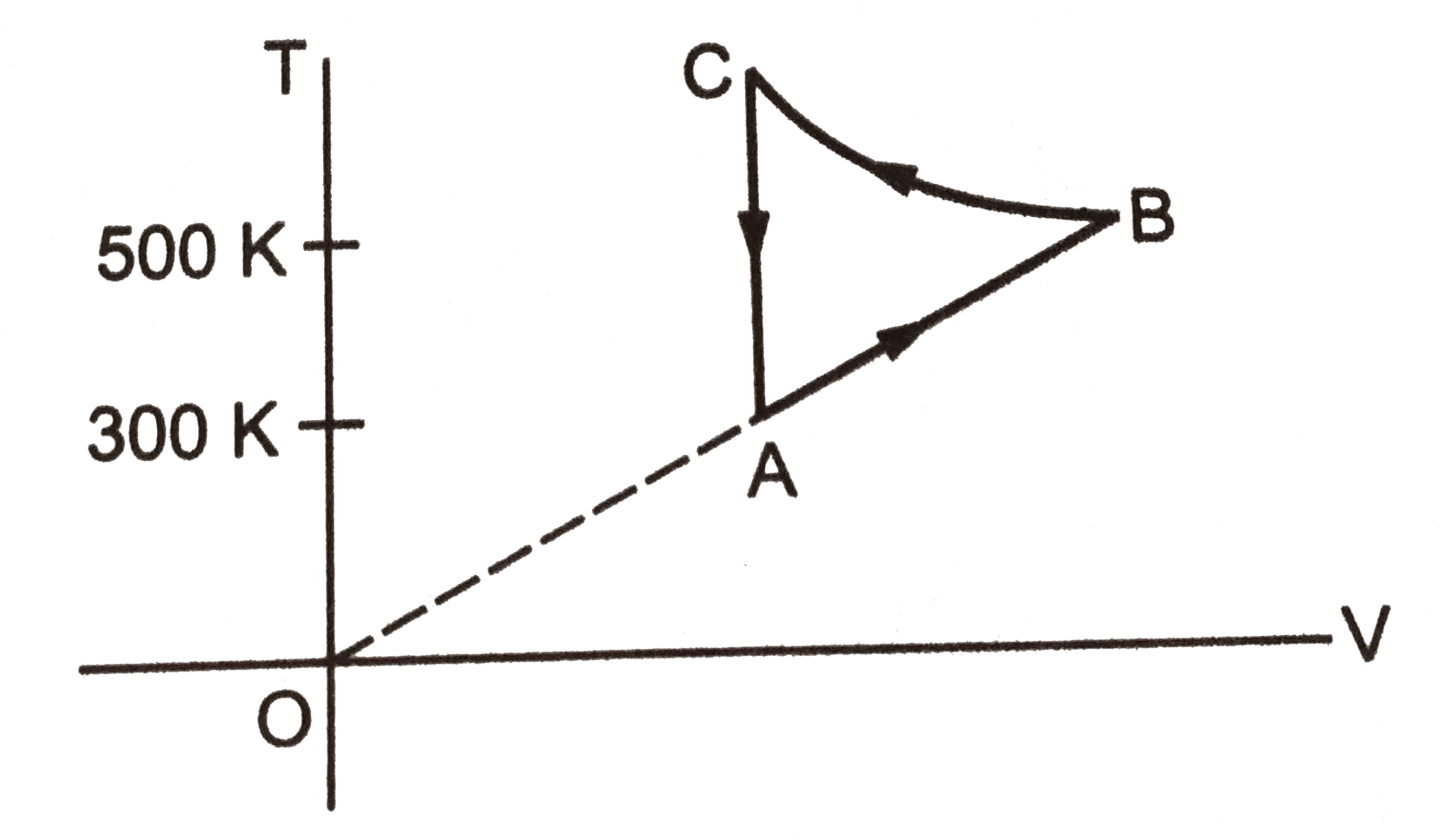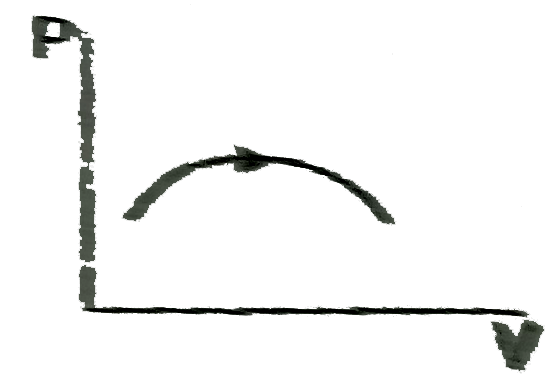Figure depicts the working diagram (P-V graph) of a process corresponding to an ideal gas. Suppose UA=10J,UB=50J and heat given to the gas during the process BC is 40 J. Determine

Work done during the entrie process ABCA.Solution in Telugu
Work done during the process ABCA
=WAB+WBC+WCA=(6−2)m3×20Nm−2−1401+0[from (a) and (b)] = -60J
Topper's Solved these Questions
- THERMODYNAMICSBOOK - AAKASH SERIESCHAPTER - THERMODYNAMICSEXERCISE - TEST YOUR SELF
17 Videos
- THERMODYNAMICSBOOK - AAKASH SERIESCHAPTER - THERMODYNAMICSEXERCISE - SHORT ANSWER TYPE QUESTIONS
8 Videos
- THERMODYNAMICSBOOK - AAKASH SERIESCHAPTER - THERMODYNAMICSEXERCISE - ADDITIONAL PRACTICE EXERCISE (PRACTICE SHEET ((ADVANCED) INTEGER/SUBJECTIVE TYPE QUESTIONS))
11 Videos
- THERMAL PROPERTIES OF MATTERBOOK - AAKASH SERIESCHAPTER - THERMAL PROPERTIES OF MATTEREXERCISE - ADDITIONAL PRACTICE EXERCISE (LEVEL - II) PRACTICE SHEET (ADVANCED) Integer/Subjective Type Questions
2 Videos
- THERMOMETRY BOOK - AAKASH SERIESCHAPTER - THERMOMETRY EXERCISE - Numerical Exercise (LEVEL- 1)
11 Videos
Similar Questions
Should a quais-static process be reversible?
View SolutionDefine two principal specific heats of a gas . Which is greater and why ?
View SolutionA cylinder of ideal gas is closed by an 8 kg movable piston of area 60cm2 . The atmospheric pressure is 100 kPa. When the gas is heated from 30∘C to 100∘C the piston rises 20 cm. The piston is then fastened in the place and the gas is cooled back to 30∘C. If ΔQ1 is the heat added to the gas during heating and ΔQ2 is the heat lost during lost cooling, find the difference.
View SolutionA constant pressure gas thermometer has a volume of 200cc, 273.2cc and 525 .1cc at 0°C, 100°C and boiling point of sulphur respectively. The resistance possessed by a platinum wire at the same temperatures as above are 2.000Ω,2.778Ωand5.280Ω respectively. Estimate the boiling point of sulphur on the basis of the two sets of observations.
View SolutionIf a temperature scale defines the freezing point of water as 100∘C and the boiling as 0∘ what temperature on the scale corresponds to 25∘ C ?
View SolutionA sample of an ideal gas is taken through the cyclic process abca . It absorbs 50 J of heat during the part ab, no heat during bc and rejects 70 J of heat during ca. 40 J of work is done on the gas during the part bc.(a) find the internal energy of the gas at b and c if it is 1500 J at a. (b) calculate the work done by the gas during the part ca.

View SolutionConsider the cyclic process ABCA, shown in, performed on a sample of 2.0 mol if an ideal gas. A total of 1200 J if heat is withdrawn from the sample in the process. Find the work done by the gas during the part BC.

View SolutionIn isobaric process of ideal gas (f=5) work done by gas is equal of 10J. Then heat given to gas during process:
View SolutionAn ideal monoatomic gas undergoes a cyclic process ABCA as shown in the figure. The ratio of heat absorbed during AB to the work done on the gas during BC id

View SolutionA sample of an ideal gas in taken through the cyclic process abca in the given figure. It absorbs 50 J of heat during the parth ab, no heat during bc and rejects 70J of heat during ca, 40 J of work is done on the gas during the part bc. (a) Find the internal energy of the gas at b adn c if it is 1500 J at a. ltbr> (b) Calculate the work done by the gas during the part ca.
View SolutionIn figure, P−V curve of an ideal gas is given. During the process, the cumulative work done by the gas

View SolutionIn a cyclic process shown in the figure an ideal gas is adiabatically taken from A to B the work done on the gas during the process AtoB is 80 J, when the gas is taken from B to a the heat absorbed by the gas is 40 J. What will be work done by the gas in process BtoA ?
View SolutionA sample of an ideal gas is taken through the cyclic process abca . It absorbs 50 J of heat during the part ab, no heat during bc and rejects 70 J of heat during ca. 40 J of work is done on the gas during the part bc.(a) find the internal energy of the gas at b and c if it is 1500 J at a. (b) calculate the work done by the gas during the part ca.

View SolutionConsider the cyclic process ABCA, shown in fig, performed on a sample of 2.0 mol if an ideal gas. A total of 1200 J if heat is withdrawn from the sample in the process. Find the work done by the gas during the part BC.

View SolutionIn isobaric process of ideal gas (f=5) work done by gas is equal of 10J . Then heat given to gas during process:
View Solution
